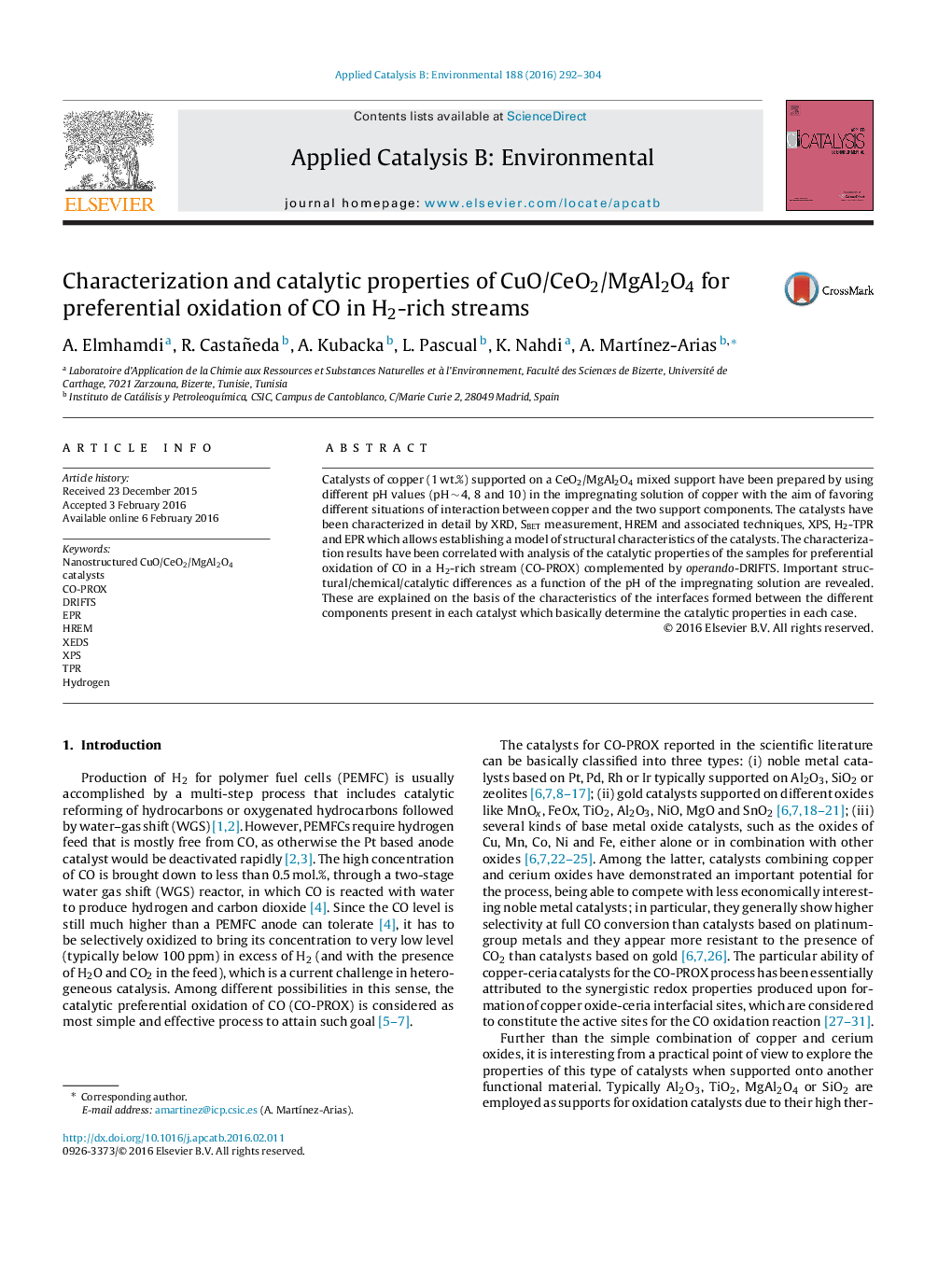| Article ID | Journal | Published Year | Pages | File Type |
|---|---|---|---|---|
| 45022 | Applied Catalysis B: Environmental | 2016 | 13 Pages |
•CuO/CeO2/MgAl2O4 CO-PROX catalysts prepared at different pH values of the impregnating solution are studied.•Different physicochemical and catalytic properties appear as a consequence of the change in the preparation parameter.•Structure/activity relationships established on the basis of combined multitechnique/catalytic activity/operando-DRIFTS study.
Catalysts of copper (1 wt.%) supported on a CeO2/MgAl2O4 mixed support have been prepared by using different pH values (pH ∼ 4, 8 and 10) in the impregnating solution of copper with the aim of favoring different situations of interaction between copper and the two support components. The catalysts have been characterized in detail by XRD, SBET measurement, HREM and associated techniques, XPS, H2-TPR and EPR which allows establishing a model of structural characteristics of the catalysts. The characterization results have been correlated with analysis of the catalytic properties of the samples for preferential oxidation of CO in a H2-rich stream (CO-PROX) complemented by operando-DRIFTS. Important structural/chemical/catalytic differences as a function of the pH of the impregnating solution are revealed. These are explained on the basis of the characteristics of the interfaces formed between the different components present in each catalyst which basically determine the catalytic properties in each case.
Graphical abstractA study of CuO/CeO2/MgAl2O4 catalysts prepared at different pH values of the impregnating solution is presented. Different physicochemical and catalytic properties appear as a consequence of such change in the preparation parameter. These are explored in detail by means of a multitechnique characterization along with catalytic tests complemented by operando-DRIFTS. On the whole, the results obtained allow the establishment of structure/activity relationships most relevant for the practical application of this type of catalysts during purification/production of hydrogen from hydrocarbons or biomass-derived fuels for its use as a fuel of PEMFCs.Figure optionsDownload full-size imageDownload as PowerPoint slide
